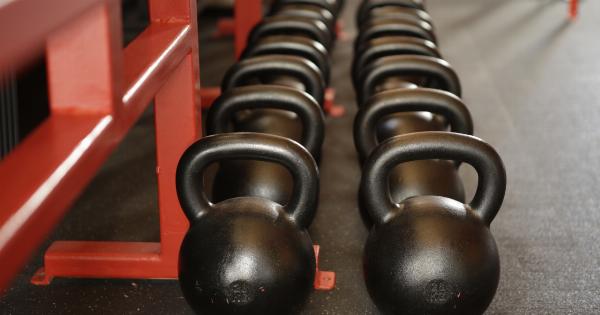Prostate cancer is a leading cause of cancer-related deaths among men worldwide.
While there are various treatment options available, including surgery, radiation therapy, hormone therapy, and chemotherapy, the role of fitness in prostate cancer treatment is often overlooked. However, numerous studies have shown that incorporating regular exercise and physical activity into the treatment plan can be beneficial for both physical and mental well-being, as well as improving treatment outcomes.
Benefits of Exercise for Prostate Cancer Patients
1. Improved treatment tolerance:.
Engaging in regular exercise before, during, and after prostate cancer treatment has been shown to improve treatment tolerance. Physical activity can help minimize treatment-related side effects such as fatigue, pain, nausea, and loss of muscle mass.
By maintaining a good level of fitness, patients may be able to undergo treatments at higher doses, leading to better outcomes.
2. Enhanced overall physical health:.
Exercise plays a crucial role in maintaining overall physical health. It helps to strengthen the immune system, promote cardiovascular health, maintain a healthy body weight, and improve bone health, all of which are vital for prostate cancer patients.
Regular physical activity can also reduce the risk of developing other chronic conditions such as type 2 diabetes and cardiovascular disease.
3. Reduced risk of cancer recurrence:.
Research suggests that staying physically active after prostate cancer treatment can reduce the risk of cancer recurrence.
Regular exercise has been shown to lower the levels of certain growth factors and hormones associated with prostate cancer progression. It can also help prevent the formation of new blood vessels around tumors, limiting their ability to grow and spread.
4. Improved mental well-being:.
Dealing with cancer can be mentally and emotionally challenging. Exercise can act as a stress reliever and help alleviate anxiety, depression, and mood swings commonly experienced by prostate cancer patients.
Physical activity stimulates the release of endorphins, which are natural mood enhancers, leading to improved overall mental well-being.
5. Increased quality of life:.
Regular exercise has been shown to enhance the overall quality of life for prostate cancer patients. It can improve sleep patterns, boost self-esteem, and provide a sense of control and empowerment over one’s health.
Engaging in physical activity can also help patients regain a sense of normalcy and routine during and after cancer treatment.
Types of Exercise for Prostate Cancer Patients
Prostate cancer patients should aim for a well-rounded fitness routine that incorporates various types of exercises. Here are some types of exercises that can be beneficial:.
1. Aerobic exercises:.
Aerobic exercises, such as brisk walking, jogging, swimming, or cycling, are beneficial for cardiovascular health. These exercises help improve stamina, increase lung capacity, and enhance overall fitness levels.
Aim for at least 150 minutes of moderate-intensity aerobic activity or 75 minutes of vigorous-intensity aerobic activity each week.
2. Strength training:.
Strength training exercises help build muscle mass and increase strength. Resistance exercises using body weight, dumbbells, resistance bands, or weight machines can be incorporated into the routine.
It is recommended to do strength training exercises at least twice a week, targeting major muscle groups.
3. Flexibility exercises:.
Stretching exercises help improve flexibility and joint range of motion. Incorporating activities like yoga or Pilates can improve posture, balance, and coordination. Try to perform flexibility exercises at least two to three times a week.
4. Balance exercises:.
Balance exercises help reduce the risk of falls, which can be particularly important for older prostate cancer patients. Simple exercises like standing on one leg, heel-to-toe walk, or yoga poses that challenge balance can be beneficial.
Aim for balance exercises at least three times a week.
Considerations and Precautions
While exercise is generally beneficial for prostate cancer patients, there are certain considerations and precautions to keep in mind:.
1. Consult with healthcare professionals:.
Before starting any exercise program, it is crucial to consult with healthcare professionals, including oncologists and physiotherapists.
They can provide personalized recommendations based on the individual’s overall health, cancer stage, and treatment plan.
2. Start slowly and progress gradually:.
For individuals who have been inactive or undergoing treatment, it is important to start slowly and gradually increase the intensity and duration of exercise. This helps to prevent injuries and allows the body to adapt gradually.
3. Listen to your body:.
Pay attention to how your body feels during and after exercise. If experiencing pain, dizziness, or any other concerning symptoms, it is important to stop exercising and seek medical advice.
4. Stay hydrated:.
Drink plenty of fluids before, during, and after exercise to stay hydrated, especially if undergoing treatments that may cause dehydration.
5. Balance rest and activity:.
While exercise is beneficial, it’s also important to allow time for rest and recovery. Finding the right balance between activity and rest is crucial for overall well-being.
Incorporating Fitness into Prostate Cancer Treatment
1. Develop an exercise plan:.
Work with healthcare professionals and certified exercise specialists to develop a personalized exercise plan. The plan should consider the individual’s fitness level, preferences, and treatment requirements.
2. Set realistic goals:.
Set achievable fitness goals that are specific, measurable, attainable, relevant, and time-bound (SMART goals). It helps to stay motivated and track progress over time.
3. Find support:.
Join support groups or connect with other prostate cancer patients who are incorporating fitness into their treatment. Sharing experiences and challenges can provide encouragement and motivation.
4. Stay consistent:.
Consistency is key when it comes to fitness. Aim for regular exercise sessions, even if it’s for shorter durations. Breaking down exercise into smaller bouts throughout the day can be more manageable for some individuals.
5. Stay motivated:.
Find activities that you enjoy and vary your exercise routine to keep it engaging. Exercise with a buddy or listen to favorite music or podcasts to stay motivated during workouts.
Conclusion
Regular exercise and physical activity play a significant role in prostate cancer treatment.
It offers numerous benefits, including improved treatment tolerance, enhanced physical and mental well-being, reduced risk of cancer recurrence, and ultimately, a better quality of life. Prostate cancer patients should work closely with healthcare professionals to develop an appropriate exercise plan and consider exercise as an integral part of their treatment journey.






























